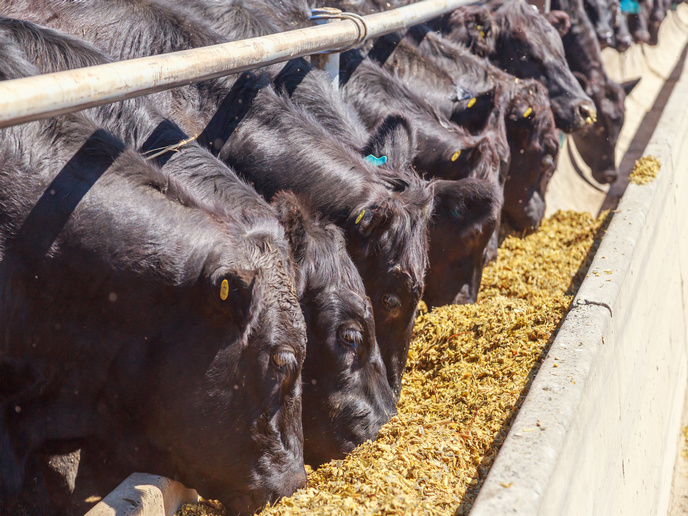Why are healthy farm animals fed antibiotics?
Just as with humans, antibiotics are a crucial tool for treating infection and disease in farmed animals. This is especially true for those kept in large numbers and in close contact with one another, where disease can quickly spread. Which is why farmers sometimes administer the drugs to healthy animals as a preventative measure. Over time, farmers realised that animals fed a constant supply of antibiotics grew larger, faster. “The problem is that this rather liberal use of antibiotics increases the risk of antimicrobial resistance, which is a significant concern not just for livestock, but for humans too,” says Greta Reintjes, a marine biologist and microbial ecologist who leads the Microbial-Carbohydrate Interactions Group at the University of Bremen. It is this risk that led the EU to ban the prophylactic use of antibiotics in 2022. “This legislation prohibits all routine use of antimicrobials, meaning they can only be used to treat an infected or sick animal,” explains Reintjes.
Outdated benefits
While feeding healthy farm animals antibiotics may be prohibited in Europe, outside the EU it remains an established practice. For example, in Canada, where livestock farms are dominated by large feed lots, antibiotic use is more than three times the amount used in the EU. “Because removing a sick animal from such a large herd can be difficult and expensive, many livestock farmers instead give the entire herd antibiotics as a preventative measure,” remarks Reintjes. But does the convenience of such an approach outweigh the risks? Reintjes doesn’t think so. “Personally, I don’t see any benefit,” she adds. “I think such practices are the result of prioritising production over health and safety.”
Antibiotic alternatives
Having investigated alternatives to the prophylactic use of antibiotics for the RUMIC project, which was funded by the Marie Skłodowska-Curie Actions programme, Reintjes says one of the easiest ways to keep animals healthy and prevent disease is through diet. For instance, in Canada, cattle are often fed a concentrate-based diet to increase total weight gain and thus be able to produce more meat. However, such a monotonous diet is not good for the cattle’s microbiome, making the animal – and thus the herd – more susceptible to disease. “If the cattle receive a diverse diet that includes fresh grass, mixed silage and hay, amongst other foods, their microbiome will be diverse and healthy and ready to naturally fight off negative microbes should they try to develop – all without the need for antibiotics,” explains Reintjes. Reintjes also recommends administering complex carbohydrates, which act as prebiotics. By increasing the abundance of beneficial bacteria in the gut, prebiotics have been shown to promote and improve animal performance and health. “A healthy animal is less likely to be affected by disease, reducing the need for antimicrobials at the source,” concludes Reintjes. You can read more about Reintjes’ research here.



